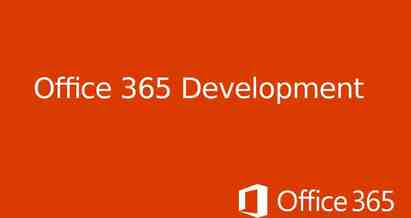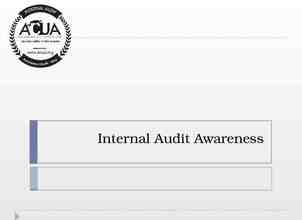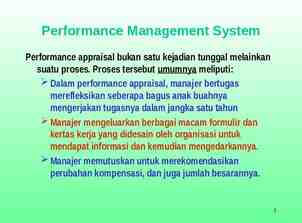Recruitment & Retention Ashley G. Evans, BA, MS Community
26 Slides3.10 MB

Recruitment & Retention Ashley G. Evans, BA, MS Community Engagement Specialist & Recruitment Manager Tennessee Clinical and Translational Science Institute (TN-CTSI)

Services & Resources TN-CTSI Research Opportunities and Connections Biostatistics, Epidemiology, and Research Design (BERD) Unit Training and Education Recruitment Innovation Center Other Services

CTSI Consultation & Services Free Clinical Research Support Study Set-up IRB Submission Assistance Regulatory Compliance Budget Assistance Finding a Collaborator Training Recruitment Community Engagement Study Documents

Overview Recruitment Recruitment Innovation Center Developing a Recruitment Plan Types and Methods of Recruitment Retention Why is Retention Important? Developing a Retention Plan Proven Methods for Increased Retention

Recruitment

Recruitment Innovation Center (RIC) The RIC provides: Support creating a recruitment and retention plan Assistance in developing recruitment strategies https://tnctsi.uthsc.edu/consultation-and-services/recruitm ent/

Developing a Recruitment Plan A recruitment plan should address the following: Study population Study setting Recruitment feasibility Assigning recruitment responsibilities to team members Recruitment methods & tools

Types and Methods of Recruitment Consider more than one method of recruitment. Recruitment methods of potential study participants: One-on-One conversations Flyers Phone calls Advertisements (Newspaper, TV & Radio) Letters/Postcards Videos Socially mediated communication (Text messaging, social media)

Types and Methods of Recruitment Referrals Partnering with clinicians Recruitment Databases ResearchMatch.com Electronic Health Records (EHR) Patient networks through Non-profits Patient Registries Paid full-service patient recruitment companies Track successful recruitment methods!

Recruitment Tool Feasibility Analysis Advertising Medium Strengths Weaknesses Newspapers & Local Magazines Builds audience quickly High out-of-pocket cost Relatively inefficient Cluttered environment Slow accumulation of audience and reach Circulations are in serious decline Short shelf life Digital UTHSC electronic bulletin boards Other university bulletin boards Lower cost Numerous advanced targeting options Slow build up of reach Some users “tune out” bulletin board ads A lot of competition for the audience’s attention Social Media Facebook Twitter Google Little to no costs Easy to edit and update Quickly builds audience through easy sharing Not easily trackable except for sharing Limited audience if not passed along ResearchMatch Free study/participant matching tool National reach Simple study submission and navigation Limited quantity of volunteers May face difficulty finding minoritized populations News environment Short lead times for space and material Good for merchandising and promotional support Potential for re-exposure through pass-along

Recruitment Tool Feasibility Analysis Advertising Medium Strengths Weaknesses Network/Broadcast TV Sight, sound, and motion Highest reach potential of all media types Immediate reach Audience selectivity in certain programs Highest out-of-pocket costs Highest production costs Competition for the audience’s attention Electronic Data Warehouse Aggregated data from affiliated hospitals Minimal cost Data is limited to affiliated hospitals Radio spots & Radio show segments Efficiency Non-intrusive/background medium More segmented audiences - A lot of competition for the easier targeting audience’s attention Lower out-of-pocket Portable medium, not suited for expenses getting an immediate response Low production costs More limited reach versus TV

For Researchers: Register as an approved researcher Website is easy to navigate You can run a feasibility study for our region to assist you with study development prior to submitting your study for recruitment For Volunteers: Convenient and easy to use Promotes volunteer choice No obligation to participate in studies Safe and secure system Volunteer information is kept confidential

ASSISTANCE REQUEST FORM https://tnctsi.uthsc.edu/consultation-andservices/assistance-request-form/

Retention

Why is Retention Important? Retention is key to the life of your study Participant retention: Keeps a study on track Saves time, money, and other resources Ability to follow up with participants Without participant retention, study results may not be valid.

Identified Issues in Participant Retention Consent form was difficult to understand Questions about the consent form and/or study were not adequately answered Site visits Number of visits, length of visits Type of study Against randomization Lack of motivation to stay in study Lack of incentive

Developing a Retention Plan A retention plan considers: Retention methods Communication plan Method of monitoring Retention plans can change over the course of your study and should allow for flexibility.

Proven Methods for Increased Retention Adequate and continuous informed consent discussion Site/study visits kept to a minimum in numbers and time Motivation and continued support: Continual education Reminders for upcoming visits “Check-ins” for participant support Recognition and appreciation Monetary incentives

Proven Methods for Increased Retention Longitudinal studies Regular contact Annual retention events Relationship building Birthday and holiday recognition

The Retention “Key” Participants need to know that their time is recognized and appreciated Time spent should represent the dedicated visit or call with a participant that helps him or her understand his or her importance in the study Higher participant satisfaction, richer study data, and potentially better study outcomes result from quality time spent

Resources & TN-CTSI Contact Information

Trial Innovation Network A collaborative initiative within the NIH CTSA Program and is composed of three key partners: CTSA Program Hubs Trial Innovation Centers (TICs) Recruitment Innovation Center (RIC)

Helpful Recruitment & Retention Documents Recruitment & Retention Plan Template COVID-19 Recruitment Retention Toolkit Community Outreach Guide Microsoft Word Document

Become a Member! Complete a membership application: https://tnctsi.uthsc.edu/about/become-a-member/ Also submit a biosketch, curriculum vitae, or resume It’s free! TN-CTSI Member benefits include: Added to the List Serv Training and Career Development Research Opportunities and Connections Access to our member directory allowing discovery of fellow researchers and collaborators

Resources and more can be found in the following locations: TN-CTSI website https://tnctsi.uthsc.edu/ TN-CTSI office 66 N. Pauline Suite 232 901-448-2874 [email protected] Need Additional Help? Contact: Ashley Evans, BA, MS, Community Engagement Specialist & Recruitment Manager [email protected] Derita Bran, MSN, RN, CCRC, Program Director, Director of Administration [email protected]

Questions?






